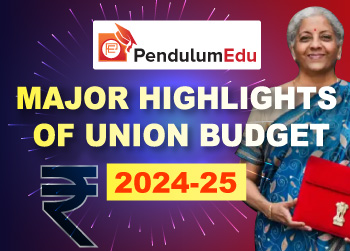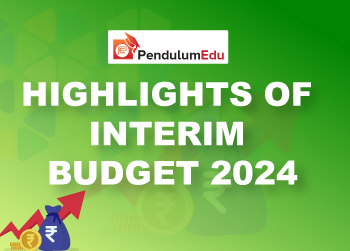Topic: Reports and Indices
1. Currency printing costs have risen by nearly 59% over the last five years, as per the Reserve Bank of India’s annual report.
- In FY21, the cost was around ₹4,000 crore. By FY25, it increased to over ₹6,300 crore, according to the report.
- During the same period, the number of notes printed rose by about 36%, as per the Reserve Bank of India’s annual report.
- It went from approximately 2,233 crore notes to 3,030 crore notes.
- Between FY24 and FY25, printing costs grew by 24.9%. Note supply also increased by 24.7% during this time.
- In FY25 alone, ₹6,372.8 crore was spent on printing. This was up from ₹5,101.4 crore in the previous year.
- The increase in cost is due to a higher volume of notes ordered. Rising prices for ink, paper, and labor also contributed to this.
- Improved security features added further to the costs.
- India prints its currency at four locations. Two presses are run by the central government at Nasik and Dewas.
- Two others are operated by RBI's subsidiary BRBNML at Mysore and Salboni.
- Money in circulation includes physical notes, coins, and digital currency (CBDC).
- The RBI no longer prints ₹2, ₹5, and ₹2000 notes.
- In 2024-25, the value of banknotes in circulation rose by 6%. The volume increased by 5.6%.
- ₹500 notes accounted for the largest share of value in circulation at 86%.
- Their share slightly declined compared to the previous year.
- Lower denominations like ₹10, ₹20, and ₹50 made up 31.7% of all notes by volume.
- Coins in circulation increased in value by 9.6% in 2024-25. Their volume grew by 3.6%.
- The value of the digital rupee (e₹) in circulation jumped by 334% in 2024-25.
Topic: Corporates/Companies
2. April 2025 saw the highest number of company registrations ever recorded in a single month.
- Over 23,700 new companies were registered during this period.
- This represents a 50% increase compared to April of the previous year.
- This increase is linked to simpler registration processes and business-friendly reforms.
- The formal economy is expanding, encouraging more entrepreneurs to set up companies.
- The Corporate Affairs Ministry reported 23,776 new company registrations in April.
- These companies had a combined paid-up capital of ₹1,380.70 crore.
- Out of these, 23,431 were companies limited by shares. These accounted for ₹1,379.83 crore in paid-up capital.
- Another 345 were registered as companies limited by guarantee.
- Companies limited by shares are profit-making businesses owned by shareholders.
- Companies limited by guarantee are typically nonprofit organisations.
- Their members are only liable for the amount they guarantee, not share value.
- Maharashtra saw the highest number of new companies, with 4,258 registered. This made up 18% of the total for April.
- Uttar Pradesh followed with 2,622 registrations, or 11%.
- Delhi came next with 2,038 companies, accounting for 9%.
- These three states together had a combined paid-up capital of ₹415.18 crore.
- The Ministry of Corporate Affairs has introduced several reforms.
- These include digitising registration systems and easing regulations.
- India has improved its global ease of doing business ranking.
- A more liberal FDI policy has also attracted foreign investment.
- The IMF projects India’s economy to grow by 6.2% in 2025.
- Growth is expected to rise further to 6.3% in 2026.
- With April's numbers, the total number of registered companies in India has surpassed 28.76 lakh.
- However, only about 65% of these, or 18.71 lakh, are currently active.
- Private limited companies dominate the business landscape. They make up 96% of all registered companies.
- These companies hold 39% of the total paid-up capital.
- Public limited companies account for only 4% of registered firms. However, they contribute 61% of the overall paid-up capital.
Topic: RBI
3. The Reserve Bank of India has set up a new regulatory body for payment systems.
- This new body is called the Payments Regulatory Board, or PRB.
- The PRB will have six members.
- It will be responsible for regulating and supervising payment systems across the country.
- The PRB replaces the earlier Board for Regulation and Supervision of Payment and Settlement Systems, known as BPSS.
- BPSS had five members and did not include any nominees from the central government.
- In contrast, the new PRB will include three members nominated by the central government.
- The RBI Governor will serve as the Chairperson of the PRB.
- The Deputy Governor in charge of Payment and Settlement Systems will also be a member.
- One officer from the RBI, nominated by the Central Board, will be the third RBI representative.
- These three officials will serve as ex officio members of the Board.
- The PRB may invite experts in payments, information technology, and law to attend its meetings.
- These invitees can be either permanent or ad hoc participants.
- The Principal Legal Adviser of the RBI will be a permanent invitee to all meetings.
- According to official guidelines, the PRB must meet at least twice each year.
- The PRB’s creation follows recommendations by an inter-ministerial committee.
- This committee was led by the Secretary of Economic Affairs.
- It had proposed an independent payment regulator in its draft to amend the Payment and Settlement Systems Act of 2007.
- The RBI had opposed the idea of moving regulatory powers outside the central bank.
- In October 2018, it issued a formal Dissent Note to the committee’s proposal.
- The RBI insisted the PRB should be part of the RBI and led by its Governor.
- It also recommended equal representation from the government and the RBI.
- The RBI suggested the Governor should have a casting vote to ensure decision-making remains smooth.
- The structure of the newly formed PRB reflects most of these suggestions.
- Each member of the PRB will have one vote.
- Decisions will be made by a majority of those present and voting.
- If there is a tie, the Chairperson will have a second or casting vote.
- If the Chairperson is absent, the Deputy Governor will cast the deciding vote.
- The PRB regulations were officially published in The Gazette of India on May 21, 2025.


Topic: Banking/Financial/Govt Schemes
4. The Government approved the continuation of the interest subsidy scheme for farmers.
- On May 28, 2025, the continuation of the Modified Interest Subvention Scheme (MISS) for 2025-26 was approved by the government.
- The scheme ensures that short-term agricultural credit is made available to farmers through the Kisan Credit Card (KCC) at subsidized interest rates.
- As per the decision taken by the Cabinet, the interest subsidy of 1.5% will continue.
- The continuation of the scheme will entail a financial burden of ₹15,640 crore on the government.
- Under MISS, farmers get short-term loans up to Rs 3 lakh through KCC at a concessional interest rate of 7%, with a 1.5% interest subsidy to eligible lending institutions.
- Additionally, farmers who repay their loans on time are eligible for an incentive of up to 3% as Prompt Repayment Incentive (PRI), effectively reducing their interest rate on KCC loans to 4%.
- For fisheries and animal husbandry loans, interest benefits are extended for loans up to ₹2 lakh.
- No changes have been proposed to the structure or features of the existing scheme.
- The total number of operational KCC accounts across the country exceeds 7.75 crore.
- Institutional credit disbursement through KCC increased from Rs. 4.26 lakh crore in 2014 to Rs. 10.05 lakh crore by December 2024.
- Overall agricultural credit flow also rose from Rs.7.3 lakh crore in FY 2013-14 to Rs.25.49 lakh crore in FY 2023-24.
Topic: Summits/Conferences/Meetings
5. PM Modi chaired the PRAGATI meeting for infrastructure and governance review.
- On 28 May, the PRAGATI meeting, the ICT-based multi-modal platform for Pro-Active Governance and Timely Implementation, chaired by PM Narendra Modi.
- Three major infrastructure projects with a combined worth exceeding ₹62,000 crore were reviewed during the meeting.
- The reviewed projects spanned the sectors of Road Transport, Power, and Water Resources, covering several States and Union Territories.
- The Prime Minister emphasized on removing implementation bottlenecks to ensure timely completion.
- Public grievances under the Real Estate Regulatory Authority (RERA) were also examined.
- The need for mandatory registration of all eligible real estate projects under RERA was stressed to protect homebuyers.
- Best practices in the development of India’s semiconductor ecosystem were discussed as a potential model for national adoption.
- Till the current progress meetings, 373 projects with a total cost of about Rs 20.64 lakh crore have been reviewed.
Topic: Indian Economy/Financial Market
6. India’s industrial growth in April 2025 was moderate.
- The Index of Industrial Production (IIP) rose by 2.7 per cent compared to April 2024.
- This was lower than the 3.94 per cent growth recorded in March 2025.
- It was also slower than the growth seen in April last year.
- The IIP reached 152.0 in April 2025, up from 148.0 a year earlier.
- Manufacturing, the largest component of the index, grew by 3.4 per cent.
- This was slightly higher than the 3.0 per cent growth seen in March.
- Electricity generation increased by 1.1 per cent during the month.
- Mining activity shrank slightly, falling by 0.2 per cent.
- Out of 23 industry groups in manufacturing, 16 showed positive growth.
- The manufacture of machinery and equipment grew the most, with a 17.0 per cent rise.
- The motor vehicles and trailers segment expanded by 15.4 per cent.
- The basic metals sector reported a 4.9 per cent increase.
- Infrastructure and construction goods output rose by 4.0 per cent.
- Capital goods production jumped by 20.3 per cent in April. Intermediate goods output increased by 4.1 per cent.
- Consumer durables saw a 6.4 per cent growth. Consumer non-durables declined by 1.7 per cent.
- Primary goods output contracted by 0.4 per cent.
- The index for primary goods was 151.6 in April. Capital goods were recorded at 114.3.
- Intermediate goods stood at 164.2. Infrastructure and construction goods were indexed at 191.6.
- Consumer durables had an index of 127.2. Consumer non-durables had an index of 148.4.
- The final data for March 2025 was revised upward.
- The weighted response rate for March rose from 88 per cent to 93 per cent.
- The quick estimate for April 2025 was based on an 88 per cent response rate.
- Detailed data by sector and use-based category is provided in Statements I, II, and III.
- Statement IV includes monthly indices for the last 13 months to show trends.
Topic: Appointments
7. Ram Mohan appointed as new MPEDA director.
- Ram Mohan M. K. has been appointed as the new director of the Marine Products Export Development Authority (MPEDA).
- His academic qualifications include a PhD from ICAR–CIFE, Mumbai, and a postgraduate degree in mariculture from CMFRI.
- Since joining MPEDA in 2003, he has played key roles in marketing, quality assurance, and infrastructure development.
- He also held the position of resident director in Tokyo during his tenure at MPEDA.
- He is currently a board member of MIDCON, Seafood Park India Ltd., and Lakshadweep Development Corporation Ltd.
- MPEDA:
- Established in 1972, MPEDA is a statutory body under the Ministry of Commerce and Industry to promote the export of marine products from India.
- MPEDA is the nodal agency for the overall development of the seafood industry in India to realize its full export potential as the nodal agency.
- MPEDA focuses mainly on market promotion, capture fisheries, culture fisheries, processing infrastructure and value addition, quality control, and research and development.
Topic: Banking/Financial/Govt Schemes
8. ‘Viksit Krishi Sankalp Abhiyan’ launched by PM Modi to modernize Indian agriculture.
- On 29 May, the 'Viksit Krishi Sankalp Abhiyan' was launched by Prime Minister Narendra Modi through videoconferencing as a key agricultural initiative.
- The campaign is scheduled to span 12–15 days, during which 2,000 expert teams will reach out to farmers across over 700 districts.
- These teams, consisting of scientists, agricultural experts, officials, and progressive farmers.
- Under this campaign, scientific teams will move from “lab to land,” bringing data and advanced agricultural knowledge directly to farmers.
- The objective of the campaign is to equip farmers with modern techniques ahead of the upcoming Kharif season.
- It was stressed by the Prime Minister that agricultural transformation must match current market demands and evolving consumer preferences.
- The campaign aims to align crop patterns with national and international needs and ensure fair pricing and rural economic growth.
- Schemes like the Gobardhan Yojana and promotion of nutri-cereals under “Shri Anna” were highlighted for enhancing farmer income.
- Scientists and officials were urged to treat the campaign as a national duty and document farmers' feedback for future improvements.
- The ‘Viksit Krishi Sankalp Abhiyan’ has also been launched by states such as Telangana, Karnataka, and Odisha.


 Previous
Previous 
 Latest
Latest 








Comments